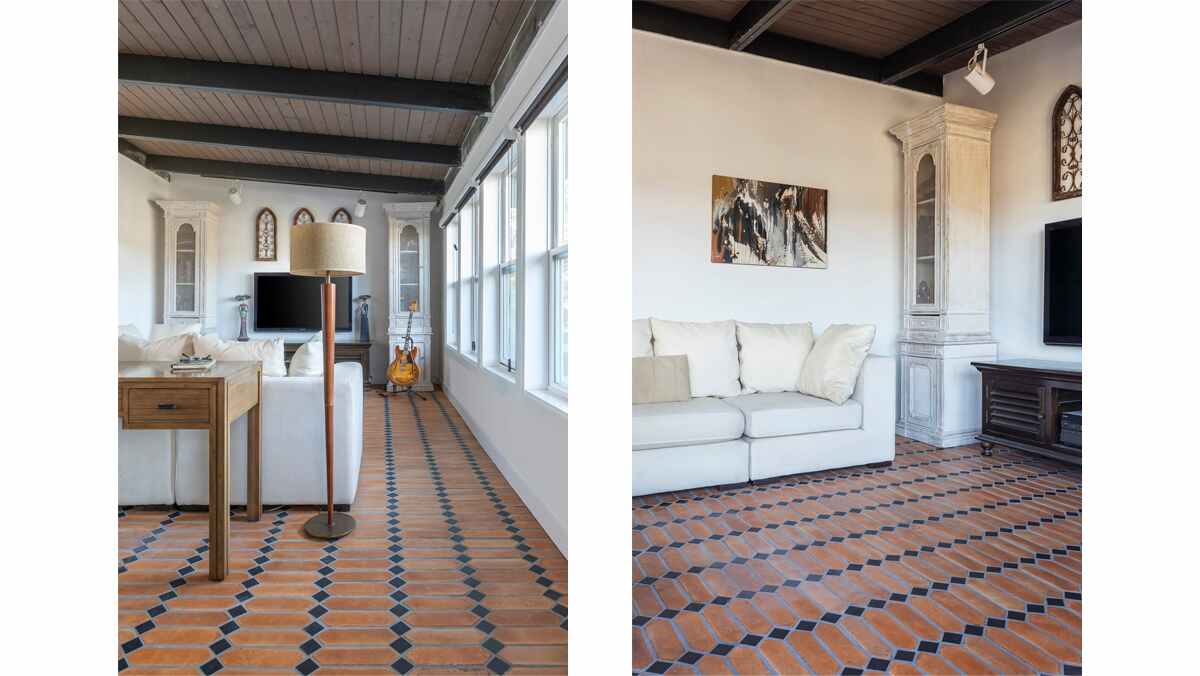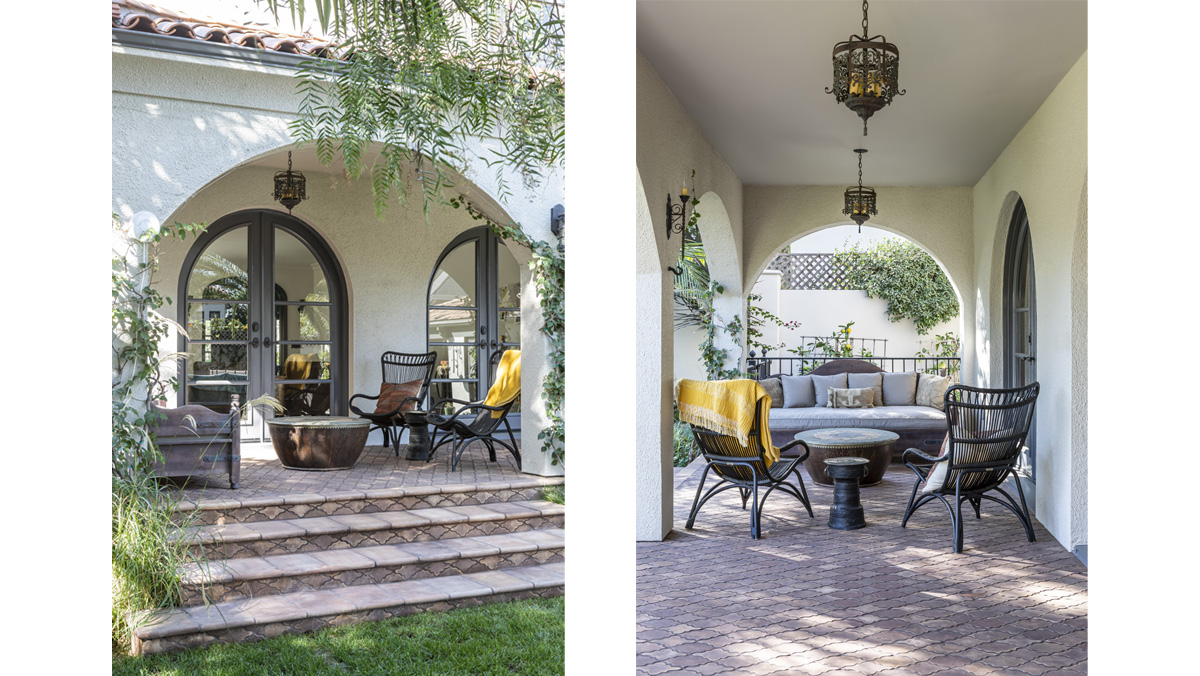03 Oct How Concrete Tiles Can to Transform the Interior (and Exterior) Design of Your Home
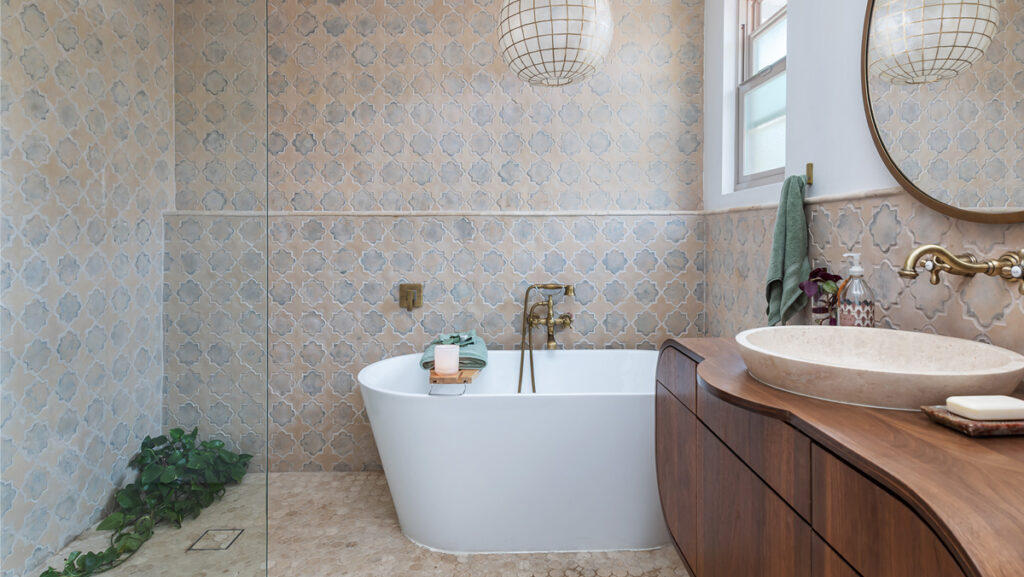
How Concrete Tiles Can Transform the Interior (and Exterior) Design of Your Home
Long lasting, beautiful tiles that work indoors and outdoors? Say no more. Concrete tiles have made their way around the world, but they’re not as common in residential areas as you think.
But why is that?
When you think of concrete, you think of the gray roads and buildings that are boring to look at, and you don’t want that in your home.
But concrete tiles have been around for centuries, adorning countries and attracting tourists worldwide. Think of the beautiful clay tiles of Italy or Spain — people are dying to bring a piece of that beauty into their homes.
With concrete tiles, you mimic the look and feel of the natural tile without sacrificing strength or your budget.
In today’s blog, we’ll share the difference between concrete and cement tiles and how concrete tiles can transform any part of your home.
But first, what are concrete tiles?
Concrete tiles are made of cement, sand, and aggregates, like gravel or tiny rocks from a riverbed. All the ingredients are mixed, individually molded, and cured to create a beautiful, sturdy tile.
The addition of gravel is no accident. It’s purposely added to increase the strength and durability of concrete tiles so they can be used indoors and outdoors to withstand any weather changes or harsh conditions.
Unlike the dark gray slabs you see on the road, concrete tiles are available in various colors, textures, shapes, and sizes to match the style of your home.
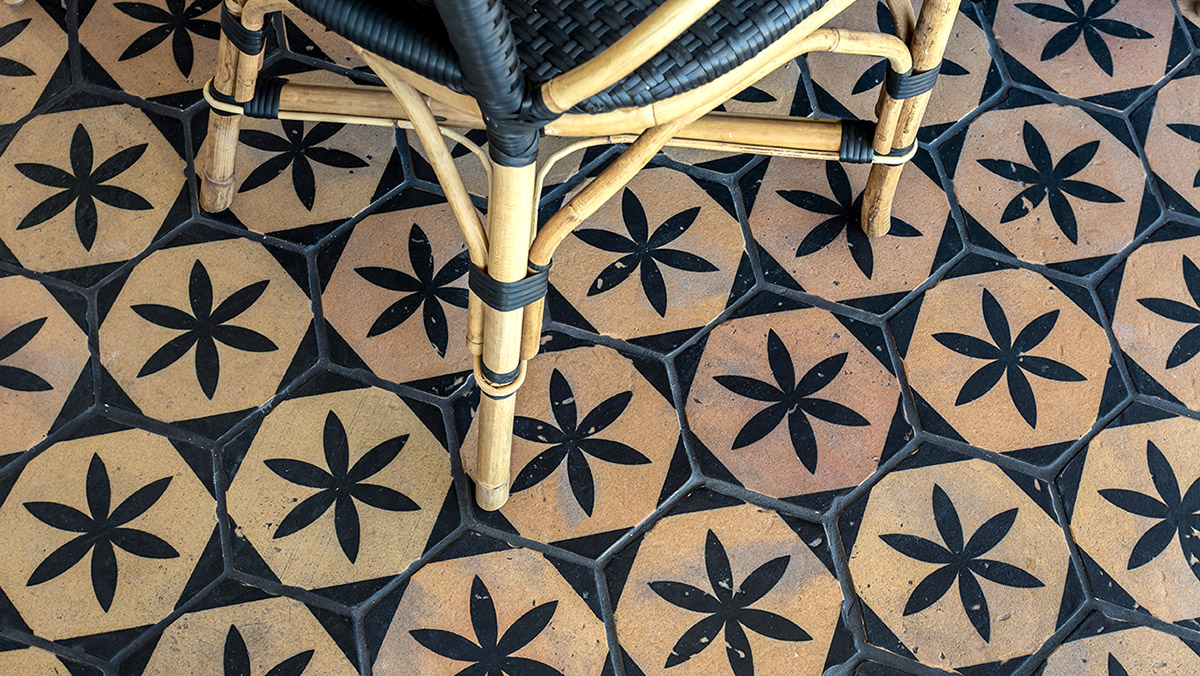

What’s the difference between concrete tiles, cement, or encaustic tiles?
While many believe there is no difference between concrete and cement tiles, there actually is. Cement and encaustic tiles are the same thing, but concrete and cement tiles are not.
As you already know, concrete tiles include aggregates, but cement tiles do not. Instead, cement tiles are made of a mixture of cement, sand, water, and marbling powder that makes the vibrant color and patterns you see on cement tiles.
Unlike concrete tiles that are uniformly colored from top to bottom, designs of cement tiles are only visible on the top layer.
Concrete tiles are made of one thick layer of concrete, while ceramic tiles are made of two layers:
-
- Concrete slab — the bottom, foundational layer of concrete
- Beautiful color pigmentation and design — the top layer that you see
This means that when a cement tile’s top layer erodes, it exposes the gray foundation underneath. But, as a concrete tile erodes, it retains the same beautiful color it’s had since day one.
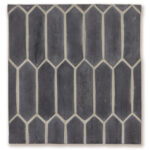
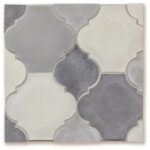
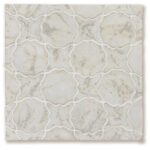
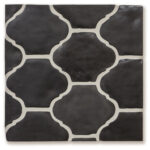
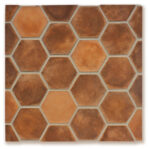
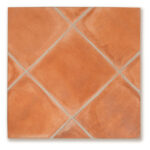
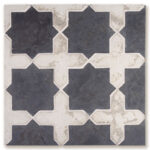
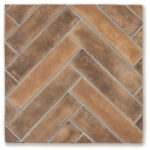
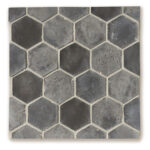
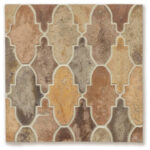
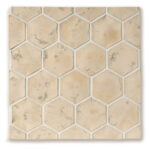
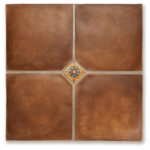
Samples of concrete tiles from Arto Brick – Artillio Handmade Concrete Tile Series
How can concrete tiles transform the look of your home?
Texture makes a difference and any professional interior design will vouch for that. Every element, from your fabric to your tile texture, can alter the look and feel of a room.
Concrete tile transforms space because it can vary in color, texture, size, and shape to fit your style. The options are limitless, and our design team can help you find the perfect one for your space.
Concrete texture options are like none you’ve seen before
Concrete tiles have more texture options than porcelain, ceramic, or cement tiles. Here are a few texture options available:
- Classic — with little to no texture at all for a clean, new concrete tile
- Limestone — light imperfections with a pitted surface for a slightly worn and lived-in feel
- Travertine — wider specs and imperfections for a worn and well-loved look
- Luna — a beautiful mix of limestone and travertine for the most faded texture that mimics features of the moon
Texture and color choices can make all the difference in determining what your space looks like.
If you want a rustic, lived-in look in your new home, a travertine textured tile can help you achieve it without the 100-year wait. A classic, no texture, smooth gray tile is excellent for a sleek, modern design. While a warm, orange, luna textured tile is a perfect addition to make your home feel like the Spanish countryside.
Colors to cool down or warm up your space
Like cement tiles, concrete tiles can come in any color you can dream of. Earthy tones are available to add warmth to your space, while cool-tone tiles can make your room feel more modern and sleek.
If you do not want to choose one of the popular colors, custom colors are available to get the exact look you want.
Shapes and 3D impressions
Unlike ceramic tiles, which are each strikingly pigmented, concrete tiles can easily be seen as boring because of the uniform color on each tile.
So to make concrete tile more interesting, we combine different shapes and colors. Shapes include:
- Conche — mimics vertical fish scales
- Arabesque — an ornamental style tile inspired by Arabic decorations
- Artillo — varying sizes of square tiles combined to create a collage feel
A tile that transforms with you
The true beauty of concrete tile is not in its durability or sturdiness. It’s the ability to mature and transform with you as your life happens.
Unlike porcelain tiles, concrete tiles absorb life around them. They are a live tile that can get nicked, stained, and scuffed. Every blemish, mark, and imperfection can make your space feel more life home.
If you’re looking for a tile that ages and adds character to your home, concrete tiles are the way to go.
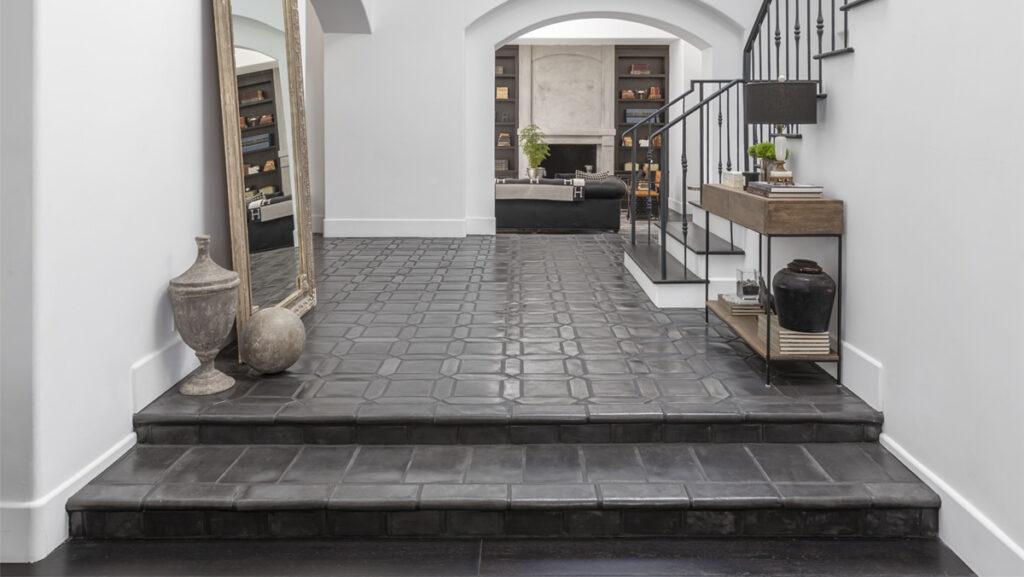
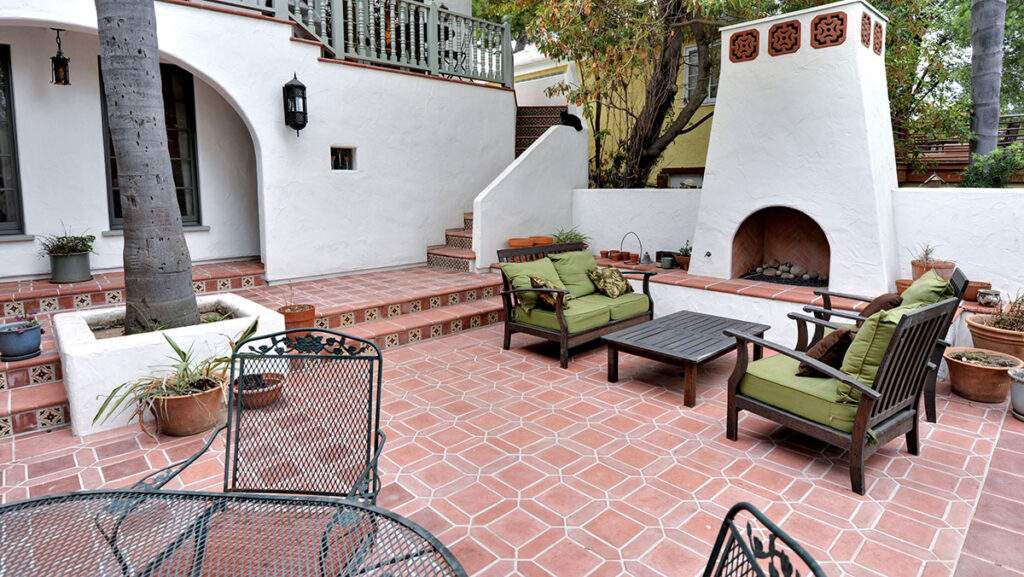
What are concrete tiles used for and where can you use them?
Most tiles on the market are recommended to be used indoors only, but concrete tiles aren’t like the others. Concrete tiles are sturdy enough to be used anywhere inside and outside your home.
With a variety of colors, textures, and sizes available, you can use concrete tiles to decorate and transform any space you want, including:
- Driveway
- Pool area
- Garden area
- Walls
- Stairs
- Fireplace
- Dining Room
- Patio
- Floors
- Ceilings
Concrete tiles are solid and sturdy, but they should never be submerged under water. Concrete tiles are porous, meaning they have many tiny, microscopic holes where bacteria and mold can grow with long exposure to water.
While concrete tiles are okay to use in the shower, proceed with caution. The oils, products, or hair dyes we use in the shower can stain the concrete tiles, making it difficult to remove.
If you love the look of concrete tiles in your shower and don’t mind possible stains, go for it. We want to make sure you know the pros and cons of every product you buy.
Do you have to seal concrete tiles?
Yes! Unlike glazed ceramic tiles, concrete tiles are porous and require sealer before installation to ensure they don’t get stained during the process.
After installation, you can seal them right away to prevent future stains. But if you want your concrete tiles to fade to the desired texture first, you can seal them once you get there.
Every homeowner has their preference, so you may choose to seal your tiles once every few years to prevent stains and fading on your concrete floors.
If you want the concrete to age naturally, you don’t have to seal it ever again.
Ready to transform your home with concrete tiles?
Our in-house design team at Twenty Five Company is ready to help you bring your concrete tile ideas to life. Whether you’re in the brainstorming stage or ready to buy, we’re here to help and answer any concrete tile questions you have along the way.
Call our Novato, California design team today to get started. 415-899-7475
